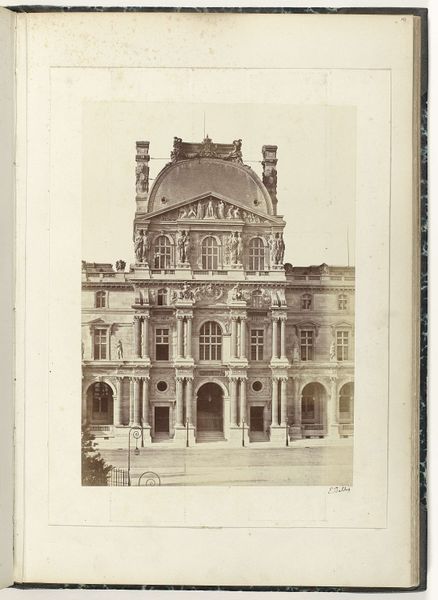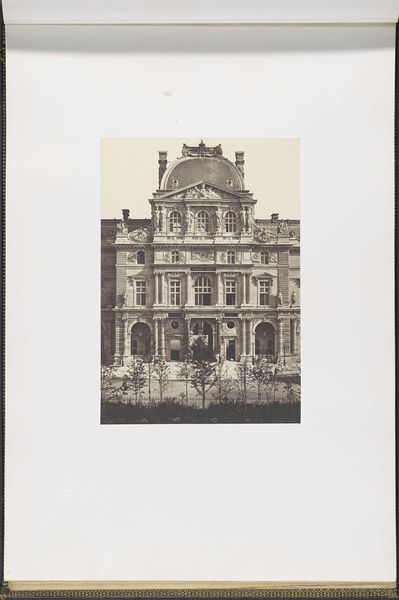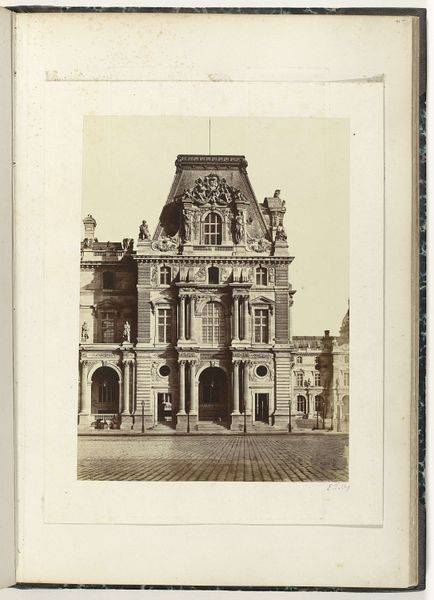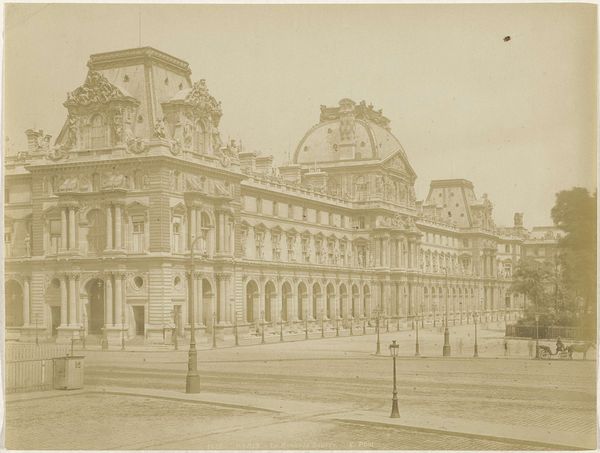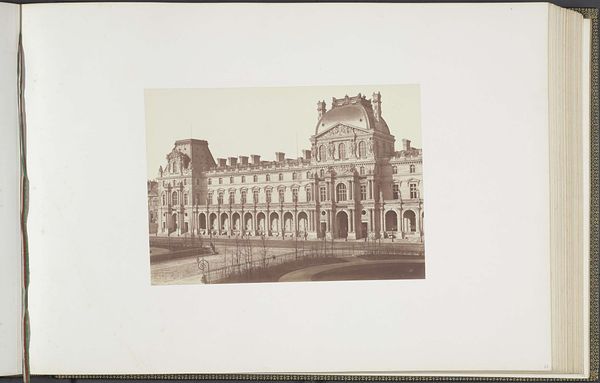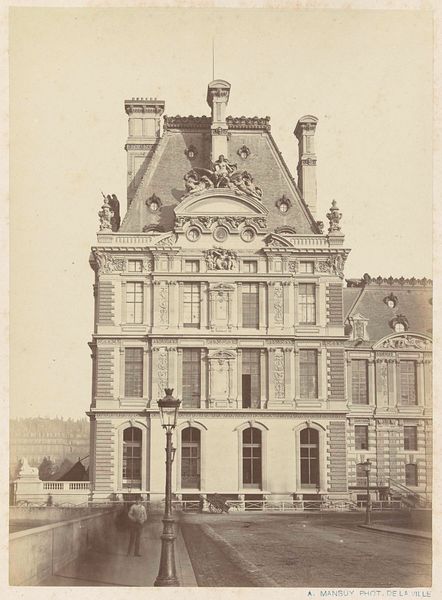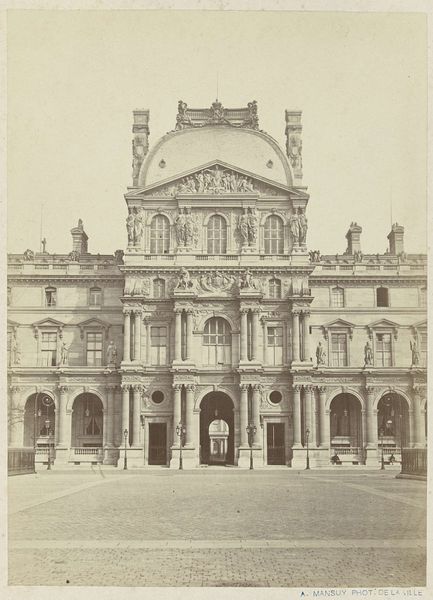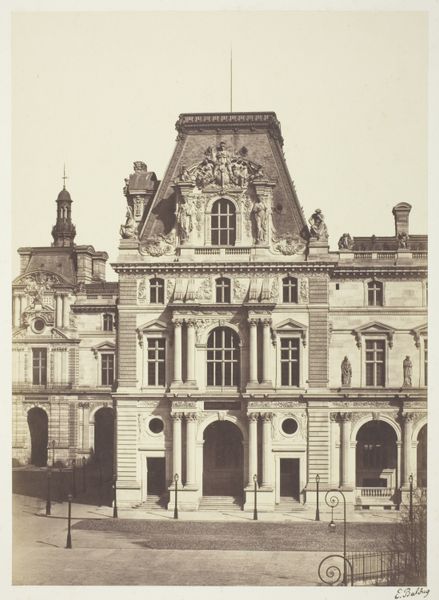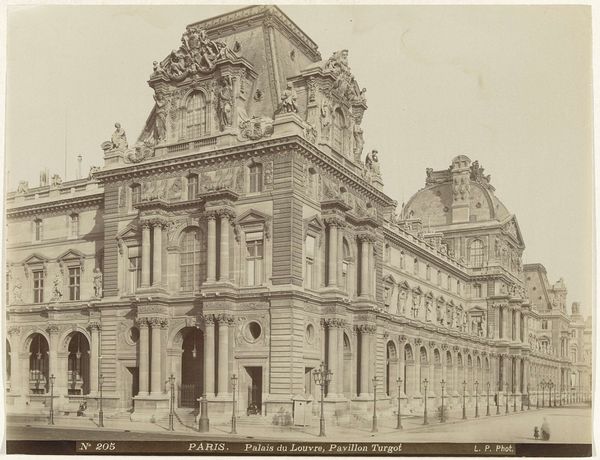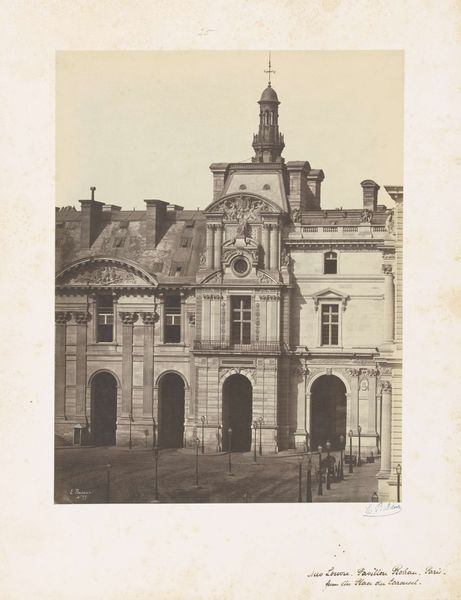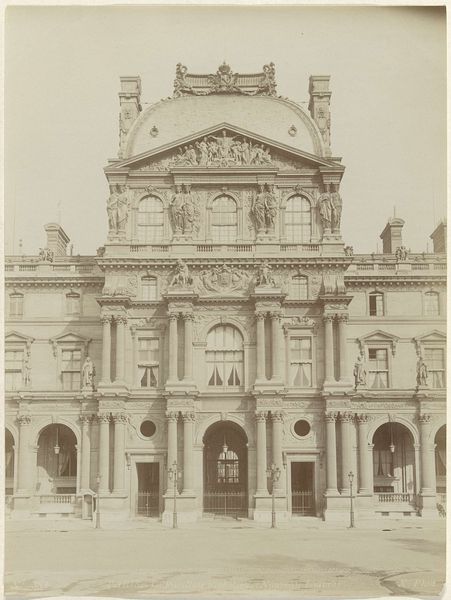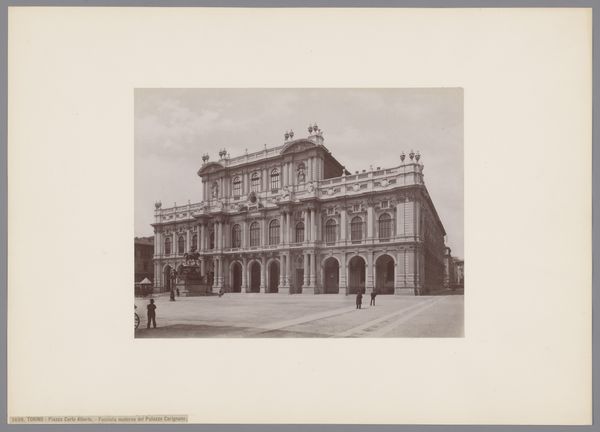
print, photography, collotype, architecture
#
neoclacissism
# print
#
photography
#
collotype
#
cityscape
#
architecture
Dimensions: height 288 mm, width 216 mm, height 345 mm, width 255 mm
Copyright: Rijks Museum: Open Domain
Editor: This is a print of the Pavillon Richelieu of the Louvre in Paris, circa 1860, by Bisson Frères. It's incredible to see this grand structure captured so early in photographic history. There’s a sense of timelessness, yet it's clearly rooted in a specific historical moment. What’s most striking to you about it? Curator: What I notice first is the tension between the aspirations of Neoclassicism, so evident in the Louvre's architecture, and the societal function photography began to serve at this time. Neoclassicism in architecture, with its emphasis on order and reason, was heavily promoted by academic institutions, and it represented the power of the state through carefully planned design. This image by Bisson Frères places the viewer outside this structured space. How does that affect your viewing experience? Editor: I suppose I feel like an observer, witnessing history unfolding rather than participating in it directly. It also looks like the pavilion is under construction. The image almost feels more candid than it would have if it had been staged or retouched. Curator: Exactly. Consider how photographs like this impacted the public's relationship with architecture and power. No longer was access limited to the elite who could physically visit and commission art, but through these widely distributed prints, the grandeur of the Louvre was made accessible. Editor: That’s really fascinating. So, this wasn’t just about documenting a building, but democratizing access to visual representations of power, whether intentional or not. Curator: Precisely. It reveals a shift in how art and architecture began to function within society, paving the way for future forms of mass media. What will happen when painting or photography meet marketing and advertising? Editor: Thinking about this image as more than just a photograph of a building gives me a lot to think about. It feels less like a static object and more like a reflection of a changing society. Curator: I am happy to hear that this exchange was enlightening for you!
Comments
No comments
Be the first to comment and join the conversation on the ultimate creative platform.
